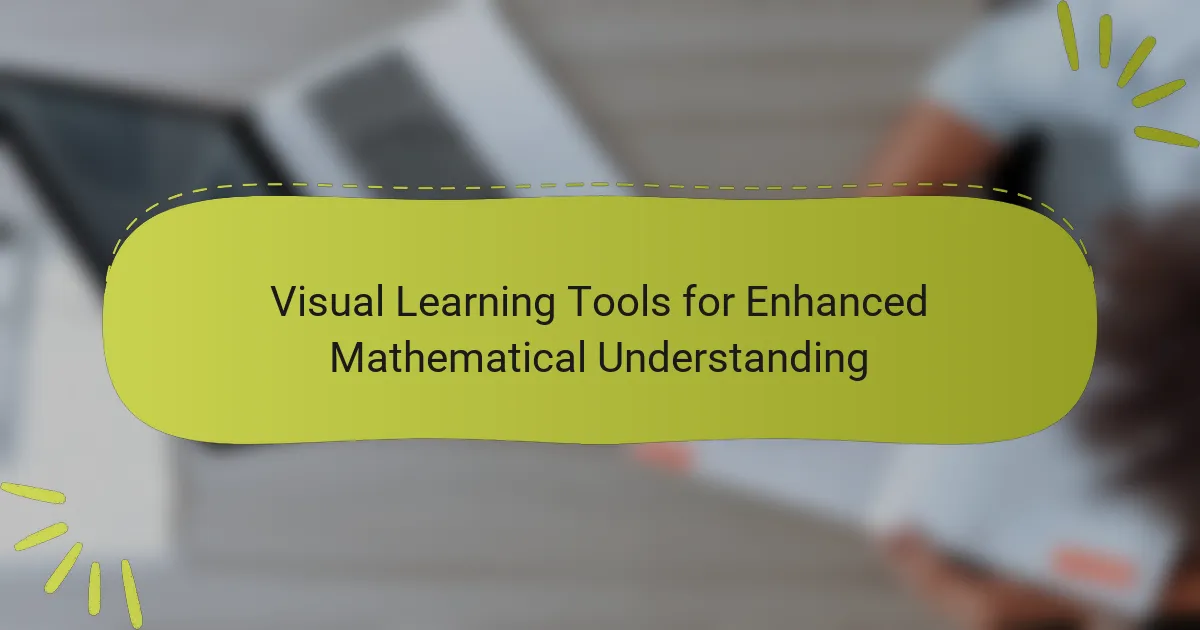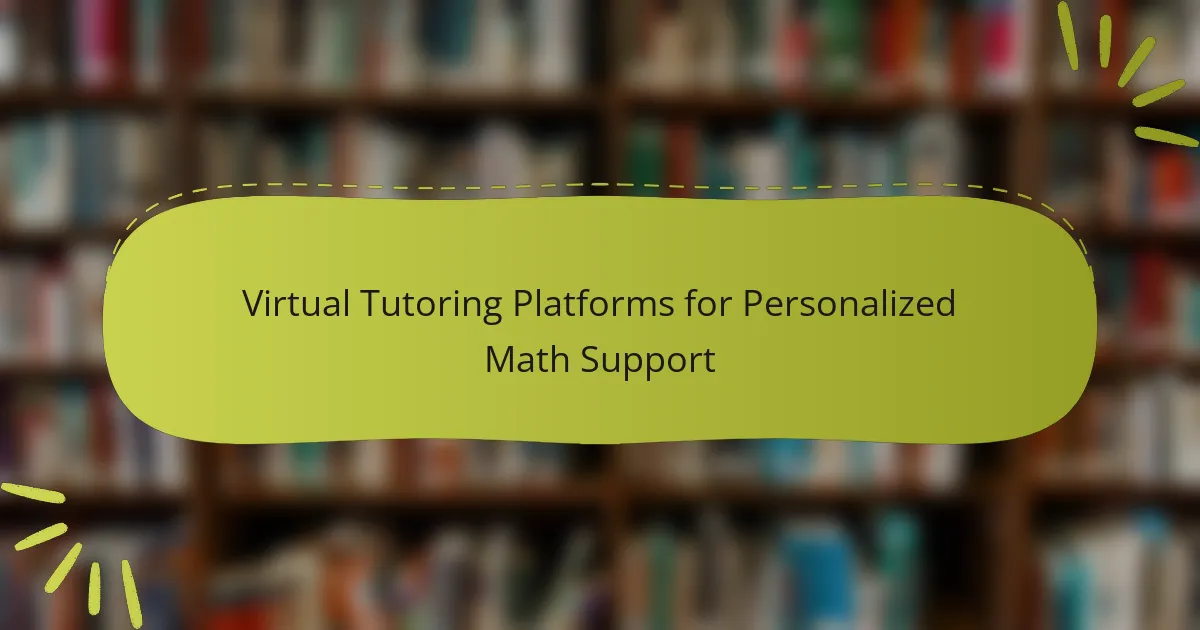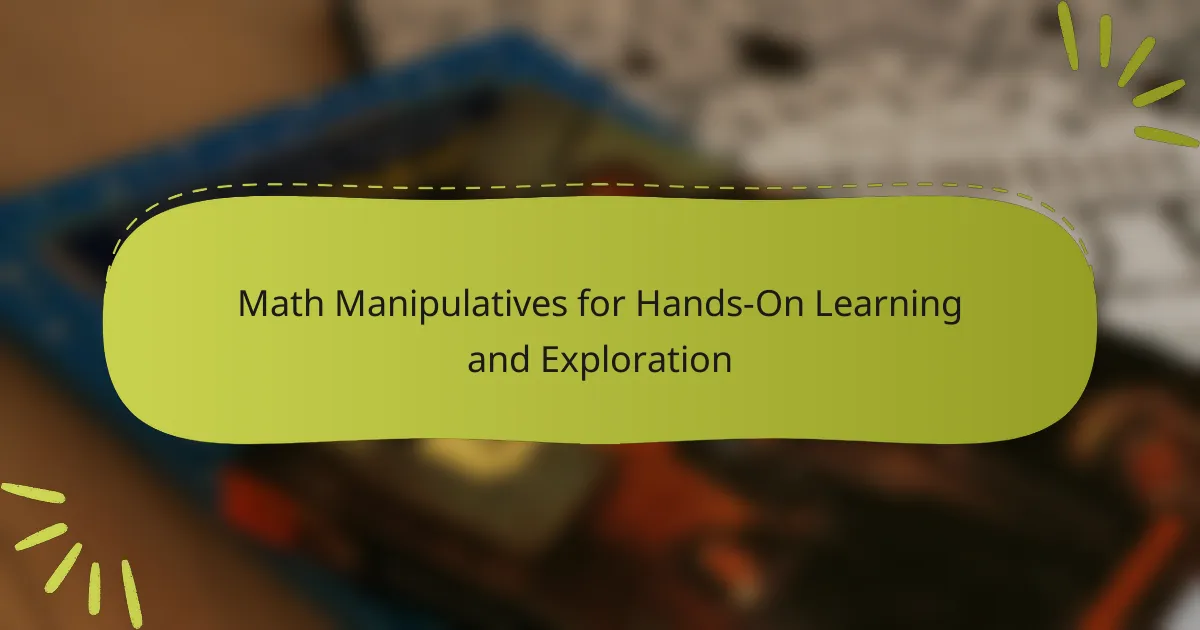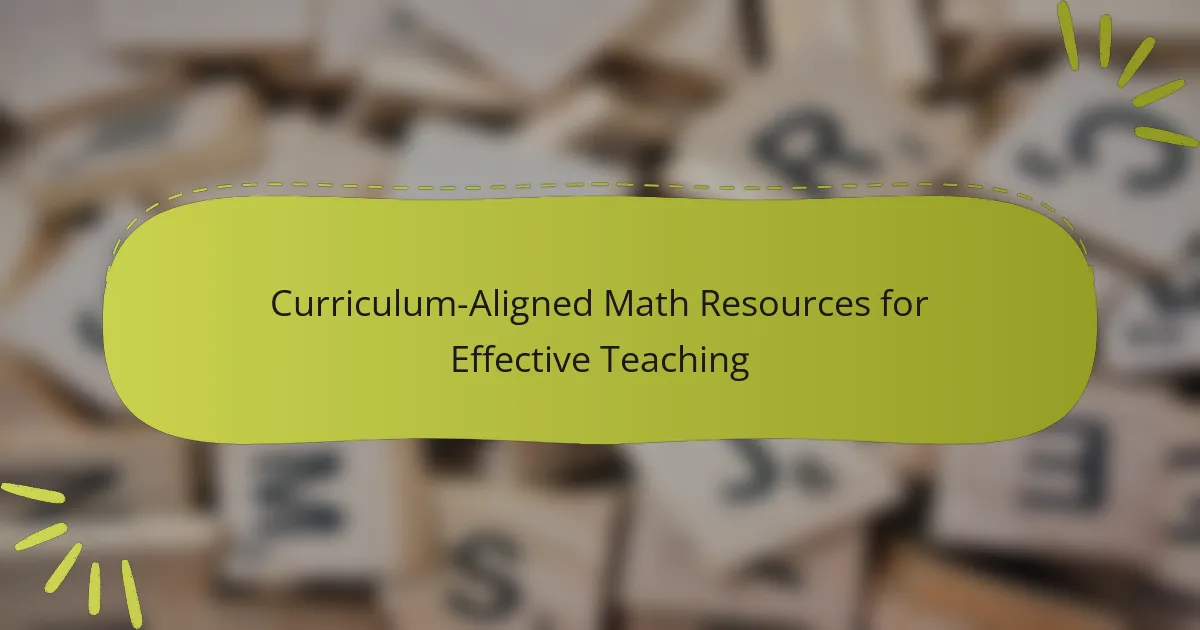Math blogs serve as online platforms for ongoing learning and resource sharing in the field of mathematics. These blogs provide educational content, including tutorials, problem-solving strategies, and teaching tips, aimed at students, educators, and math enthusiasts. They facilitate community engagement through comments and discussions, allowing users to share insights and resources. Effective math blogs incorporate clear explanations, visual aids, and regular updates to enhance understanding and maintain reader interest. However, bloggers face challenges such as audience engagement, content originality, technical issues, and addressing misconceptions, all of which impact their effectiveness and reach in a competitive landscape.
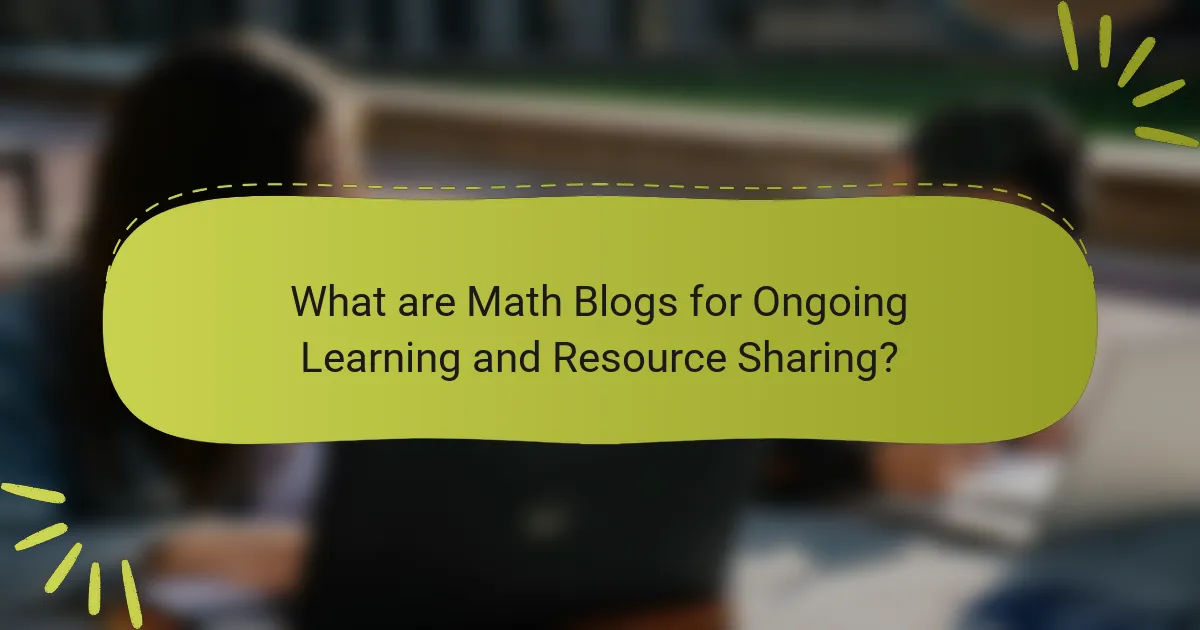
What are Math Blogs for Ongoing Learning and Resource Sharing?
Math blogs for ongoing learning and resource sharing are online platforms that provide educational content related to mathematics. These blogs offer a variety of resources such as tutorials, problem-solving strategies, and teaching tips. They cater to students, educators, and math enthusiasts seeking to enhance their understanding of mathematical concepts. Many math blogs also facilitate community engagement through comments and discussions. This interaction helps users share insights and resources. Popular math blogs often feature guest posts from educators and experts in the field. Notable examples include “Math with Bad Drawings” and “The Math Less Traveled.” These blogs contribute to a collaborative learning environment.
How do math blogs facilitate ongoing learning?
Math blogs facilitate ongoing learning by providing accessible resources and diverse perspectives on mathematical concepts. They offer tutorials, problem-solving strategies, and real-world applications. Readers can engage with interactive content, such as videos and quizzes. The comments section allows for community discussion and clarification of doubts. Regular updates keep content relevant and aligned with current educational standards. Many blogs feature guest posts from educators and mathematicians, enriching the learning experience. Research indicates that online communities enhance motivation and retention of knowledge. Overall, math blogs serve as valuable platforms for continuous education and collaboration.
What types of content are typically found in math blogs?
Math blogs typically feature tutorials, problem-solving guides, and theoretical discussions. They often include step-by-step explanations for complex concepts. Many blogs present real-world applications of mathematical theories. They may also offer resources like worksheets and practice problems. Some math blogs share news about mathematical discoveries and events. Additionally, they may highlight interviews with mathematicians. Many blogs feature discussions on educational tools and technology in math. Finally, community forums for sharing ideas and solutions are common in these blogs.
How do math blogs cater to different learning styles?
Math blogs cater to different learning styles by providing diverse content formats. Visual learners benefit from infographics and videos that illustrate concepts. Auditory learners engage with podcasts and narrated tutorials. Kinesthetic learners find interactive exercises and simulations helpful. Blogs often include written explanations for reading-focused learners. Additionally, many blogs offer quizzes and problem sets to reinforce learning. This variety accommodates multiple preferences, enhancing overall understanding. Research indicates that multi-modal instruction improves retention and comprehension in mathematics.
Why is resource sharing important in math education?
Resource sharing is important in math education because it enhances collaboration and improves access to diverse learning materials. Sharing resources allows educators to exchange effective teaching strategies and tools. This collaboration can lead to innovative approaches in teaching complex concepts. Additionally, it provides students with varied perspectives, which can deepen their understanding. Studies show that resource sharing can significantly increase student engagement and achievement in mathematics. A report by the National Council of Teachers of Mathematics highlights that collaborative resource sharing among teachers leads to improved student outcomes.
What resources do math blogs commonly share?
Math blogs commonly share educational resources such as lesson plans, worksheets, and instructional videos. These resources aid teachers and students in understanding mathematical concepts. Many blogs also provide links to online calculators and interactive tools. Additionally, math blogs often feature articles discussing teaching strategies and best practices. They may include reviews of math-related books and software. Some blogs curate lists of math competitions and events. Others offer problem sets and solutions to engage learners. Overall, math blogs serve as valuable platforms for resource sharing in the mathematics community.
How can resource sharing enhance collaborative learning?
Resource sharing enhances collaborative learning by providing access to diverse materials and perspectives. It allows learners to utilize each other’s strengths and resources. This exchange fosters a richer learning environment. Collaborative projects benefit from shared tools and information. Students can engage in problem-solving together, enhancing critical thinking skills. Research shows that resource sharing leads to improved academic performance. A study by Johnson and Johnson (2014) found that collaborative learning increases retention and understanding. Overall, resource sharing cultivates a sense of community among learners.
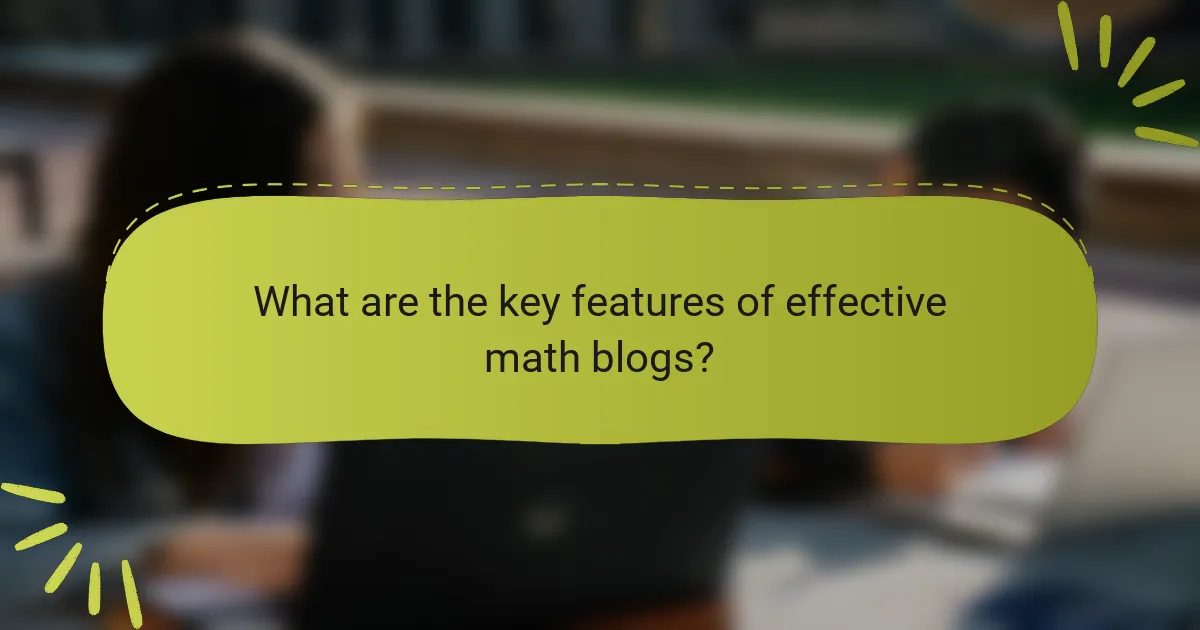
What are the key features of effective math blogs?
Effective math blogs feature clear explanations, engaging content, and practical examples. They provide step-by-step problem-solving techniques. Visual aids, such as diagrams and videos, enhance understanding. Regular updates keep content fresh and relevant. Community interaction fosters discussion and collaboration. Resource sharing, including worksheets and links to tools, supports ongoing learning. User-friendly design ensures easy navigation. These elements contribute to a comprehensive learning experience for readers.
How do user engagement strategies impact math blogs?
User engagement strategies significantly enhance the effectiveness of math blogs. These strategies foster a sense of community among readers. Increased interaction through comments and discussions encourages deeper understanding of mathematical concepts. Regularly updated content keeps readers returning and engaged.
Research indicates that blogs with interactive elements see a 20% increase in reader retention. Additionally, incorporating multimedia resources, such as videos and infographics, caters to diverse learning styles. Engaging quizzes and challenges can further motivate users to participate actively.
In summary, effective user engagement strategies create an interactive environment that promotes ongoing learning in math blogs.
What role do comments and discussions play in math blogs?
Comments and discussions in math blogs facilitate community engagement and knowledge sharing. They allow readers to ask questions and clarify concepts presented in the posts. This interaction enhances understanding and encourages deeper exploration of mathematical ideas. Additionally, comments can provide diverse perspectives, enriching the original content. Discussions can lead to collaborative problem-solving among readers. They also create a sense of belonging within the math community. Engaging in these dialogues can motivate learners to contribute their insights. Overall, comments and discussions play a crucial role in fostering an interactive learning environment in math blogs.
How can interactive content improve the learning experience?
Interactive content enhances the learning experience by engaging students actively in the learning process. This type of content includes quizzes, simulations, and interactive videos. These tools foster better retention of information. According to a study published in the Journal of Educational Psychology, interactive learning can increase retention rates by up to 75%. Engaging with content allows learners to apply concepts in real-time. This practical application reinforces theoretical knowledge. Furthermore, interactive content caters to various learning styles, making it accessible to a broader audience. By promoting collaboration through group activities, it also encourages peer learning. Overall, interactive content transforms passive learning into an active, participatory experience.
What are the best practices for creating a math blog?
To create a successful math blog, focus on clarity, engagement, and consistent updates. Clearly define your target audience. Tailor content to their knowledge level. Use simple language for complex concepts. Incorporate visuals like graphs and diagrams to enhance understanding. Regularly update content to keep it relevant. Engage with readers through comments and social media. Promote collaboration by inviting guest posts from other educators. Analyze blog traffic to understand what topics resonate with your audience. These practices foster a supportive learning environment and encourage ongoing engagement.
What content strategies should be employed for math blogs?
Employing effective content strategies for math blogs involves several key approaches. First, focus on creating clear, concise explanations of mathematical concepts. Use relatable examples to illustrate complex ideas. Incorporating visuals, such as graphs and infographics, enhances understanding. Engaging with readers through interactive content, like quizzes or problem-solving challenges, encourages participation. Regularly updating content keeps the blog relevant and fresh. Additionally, collaborating with educators or math experts can provide authoritative insights. Utilizing SEO best practices helps improve visibility in search engines. These strategies collectively enhance the educational value and reach of math blogs.
How can SEO techniques enhance the visibility of math blogs?
SEO techniques can enhance the visibility of math blogs by improving their search engine rankings. Effective keyword optimization allows math blogs to target specific terms that potential readers search for. Utilizing relevant keywords in titles, headers, and content increases discoverability. Quality backlinks from reputable sites can boost authority and visibility in search results. Regularly updating content keeps the blog relevant and engaging for audiences. Implementing meta tags and descriptions improves click-through rates from search results. Additionally, optimizing for mobile users ensures accessibility for a wider audience. Statistics show that 75% of users never scroll past the first page of search results, highlighting the importance of SEO.
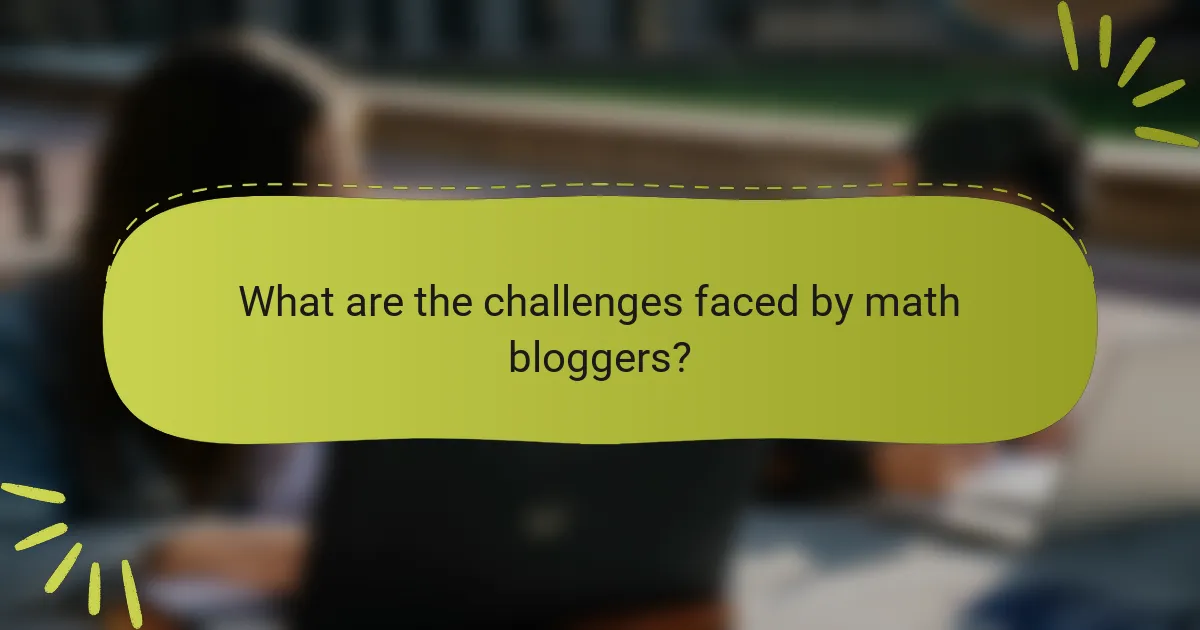
What are the challenges faced by math bloggers?
Math bloggers face several challenges that impact their effectiveness and reach. One significant challenge is maintaining audience engagement. Many math bloggers struggle to keep readers interested due to the complexity of the subject matter. Additionally, generating original content consistently can be difficult. Math topics may require extensive research and creativity to present in an accessible way.
Technical issues also pose a challenge. Bloggers may encounter difficulties with website management, SEO optimization, and analytics tracking. These technical aspects are crucial for visibility but can be overwhelming for those without a background in technology.
Furthermore, math bloggers often deal with misconceptions in the community. They must clarify misunderstandings and present accurate information, which can be time-consuming. Lastly, finding a niche within the vast field of mathematics is essential but challenging. Bloggers need to identify unique angles to stand out among numerous other math-related blogs.
How can math bloggers overcome content creation challenges?
Math bloggers can overcome content creation challenges by establishing a structured content plan. A content plan helps in organizing topics and scheduling posts. This approach reduces the stress of last-minute content creation. Collaborating with other math educators can provide fresh perspectives and ideas. Engaging with the math community through social media can also inspire new content. Utilizing educational resources and research can enhance the credibility of the blog. Furthermore, seeking feedback from readers can guide future content direction. Regularly analyzing blog performance can identify successful topics and areas for improvement.
What tools can assist in the writing and publishing process?
Writing and publishing tools include word processors, grammar checkers, and content management systems. Word processors like Microsoft Word and Google Docs facilitate drafting and editing text. Grammar checkers such as Grammarly enhance writing quality by identifying errors. Content management systems like WordPress streamline the publishing process. These tools improve efficiency and ensure professional presentation. Statistical data shows that using these tools can reduce editing time by up to 30%. Additionally, they support collaboration among multiple writers, enhancing the overall quality of content.
How can bloggers manage time effectively while maintaining quality?
Bloggers can manage time effectively while maintaining quality by implementing structured planning and prioritization. Creating a content calendar helps bloggers allocate time for research, writing, and editing. This approach ensures deadlines are met without compromising quality. Utilizing tools like project management software can streamline workflow and enhance productivity. Time blocking techniques allow bloggers to dedicate focused periods for specific tasks, minimizing distractions. Research indicates that consistent scheduling improves output quality and efficiency. According to a study by the Content Marketing Institute, 60% of successful bloggers attribute their efficiency to planning and organization.
What tips can enhance the effectiveness of math blogs?
To enhance the effectiveness of math blogs, focus on clear explanations and engaging content. Use simple language to explain complex concepts. Incorporate visuals like diagrams and videos to aid understanding. Regularly update content to keep it relevant and accurate. Encourage interaction through comments and questions to build community. Share real-world applications of math to demonstrate its importance. Utilize SEO strategies to increase visibility and reach a wider audience. Collaborate with other educators to diversify perspectives and resources.
How can bloggers encourage reader interaction and feedback?
Bloggers can encourage reader interaction and feedback by implementing various strategies. They can ask open-ended questions at the end of posts to stimulate discussion. This invites readers to share their thoughts and experiences. Additionally, bloggers can create polls or surveys related to the content. This method actively engages readers and provides instant feedback.
Incorporating comment sections allows readers to leave their opinions. Responding to these comments fosters a sense of community. Bloggers can also utilize social media platforms to promote their posts. Sharing content on these platforms encourages readers to engage in discussions elsewhere.
Hosting live Q&A sessions can further enhance interaction. This format allows readers to ask questions in real-time. Offering incentives, such as giveaways for comments or shares, can motivate readers to participate.
Using analytics tools helps bloggers understand which topics generate the most engagement. This data can guide future content creation. Overall, these strategies create an interactive environment that promotes ongoing reader feedback.
What are some common mistakes to avoid in math blogging?
Common mistakes to avoid in math blogging include neglecting audience engagement. Failing to interact with readers can lead to decreased interest. Another mistake is using overly complex language. This can alienate readers who may not have advanced math backgrounds. Additionally, not providing clear explanations can confuse your audience. It’s important to break down concepts into digestible parts. Skipping proper citations can also undermine credibility. Always reference sources to support your claims. Lastly, inconsistent posting can lead to a loss of readership. Regular updates keep your audience engaged and informed.
Math blogs for ongoing learning and resource sharing are online platforms that provide educational content and resources related to mathematics, catering to students, educators, and math enthusiasts. These blogs typically feature tutorials, problem-solving strategies, and teaching tips, while facilitating community engagement through comments and discussions. They enhance ongoing learning by offering diverse content formats that cater to different learning styles and promote resource sharing among educators. Effective math blogs incorporate clear explanations, engaging content, and user engagement strategies to foster a collaborative learning environment.
